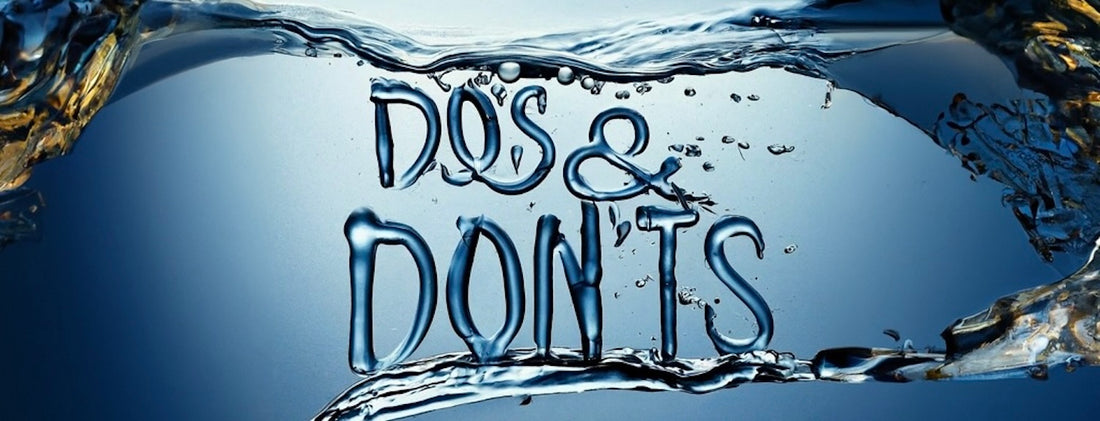This tutorial will function as one of many guides to help people avoid making costly mistakes when using horticultural equipment and tools.
Some of these rules will sound blatantly obvious and rather silly to mention, but never underestimate human stupidity!
pH and EC/PPM Tool Care (Water Control Instruments)
pH and Water testing tools are sometimes stored and cared for poorly, resulting in damaged equipment that will function poorly or never again. This is especially the case with delicate digital pH meters which have a glass probe that must be stored in ionised water
It might sound like mentioning the obvious, but time and time again we have seen people bring in expensive measuring tools and instruments that have not been cared for or used properly, requesting a refund or warranty when its a clear case of user error.
#1 Don't drop your expensive electrical water instruments into your reservoir. - Just because most pH and EC/PPM tools are water resistant, this does not mean they can withstand being dropped into mineral dense nutrient reservoirs or deep buckets of water and continue to function properly.
#2 Store your pH probes correctly in ionised solution (probe storage solutions), not plain water or nothing at all. - Your pH probe will certainly stop functioning correctly if you do not care for it and store it correctly, this sounds like a no brainer but we have to continue to re-iterate this to careless people.
#3 Calibrate your pH probes often, or expect inaccurate measurements. - Pretty straight forward really, yet many people do not bother to calibrate and wonder why their plants are experiencing issues.
Double Dipping, Nutrient Contamination
A common mistake we see way too often, people bring in a nutrient bottle that has precipitated or reacted to the mixing of concentrated chemicals that need to be stored separately.
#1 Don't double dip your nutrients from one bottle to another. - Never re-use a instrument or tool that has been dipped or coated in one nutrient, straight into the bottle of another nutrient.
For example: people often use a pipette or syringe to dose their nutrients straight out of the bottle, then dip that same tool into another bottle of nutrients without cleaning their tool, contaminating the second bottle with the contents of the first. There is a reason why nutrients are split into A and B bottles (2 or 3 part nutrients).
Exhaust Fan Calculations
Most growers do not truly understand HVAC requirements and what capacity extraction fans are required for their grow space, often buying any fan they think will do the job or fits their budget.
#1 Do not just buy any exhaust fan because it matches your budget. - Properly calculate your grow space to acquire an exhaust fan with matching capacity. If a exhaust fan for a grow space is too powerful, it will extract air and moisture at rates much greater than desired, leaving your humidity far below optimal levels, often leading to skewed VPD (Vapour Pressure Deficits) which will eventually lead to massive nutritional issues and the sharp decline of your plants health.
Grow Room Tidiness
#1 Don't leave your grow room messy, clean up old foliage and dead plant mass. - Leaving dead decaying foliage or mess around the grow room will eventually result in issues arising, from thrips to mould to unwanted growth that will significantly affect your plants health. The most common issue from leaving dead foliage around are Thrips, a pest that thrives on decaying plant matter and eventually start eating your live plants.
Feeding your plants ice cold water
#1 Do not water your plants with ice cold water. - Different plants have different temperature requirements, but no plant deals well with having freezing cold water flooding its root zone. Many flowering plants have a minimum core temperature of around 15degree celsius before metabolic processes begin to shut down. During the colder months, many growers often leave their nutrients or water supply in cold conditions, resulting in possibly feeding a solution of sub-10 degrees celsius water to their plants, shocking them almost instantly as they try to maintain homeostasis
Expecting instant results
#1 Do not expect overnight results from your plants, be patient. - As many things do, growing plants takes time and patience. This is especially important to remember when you run into nutritional issues that you wish to address and fix. If your plant is showing signs of a deficiency or toxicity of a certain element, don't expect your efforts to fix this problem to work overnight, expect days to weeks to be the time it takes for your plants to recover, if not you may stress out and drive yourself mad expecting instant results.




